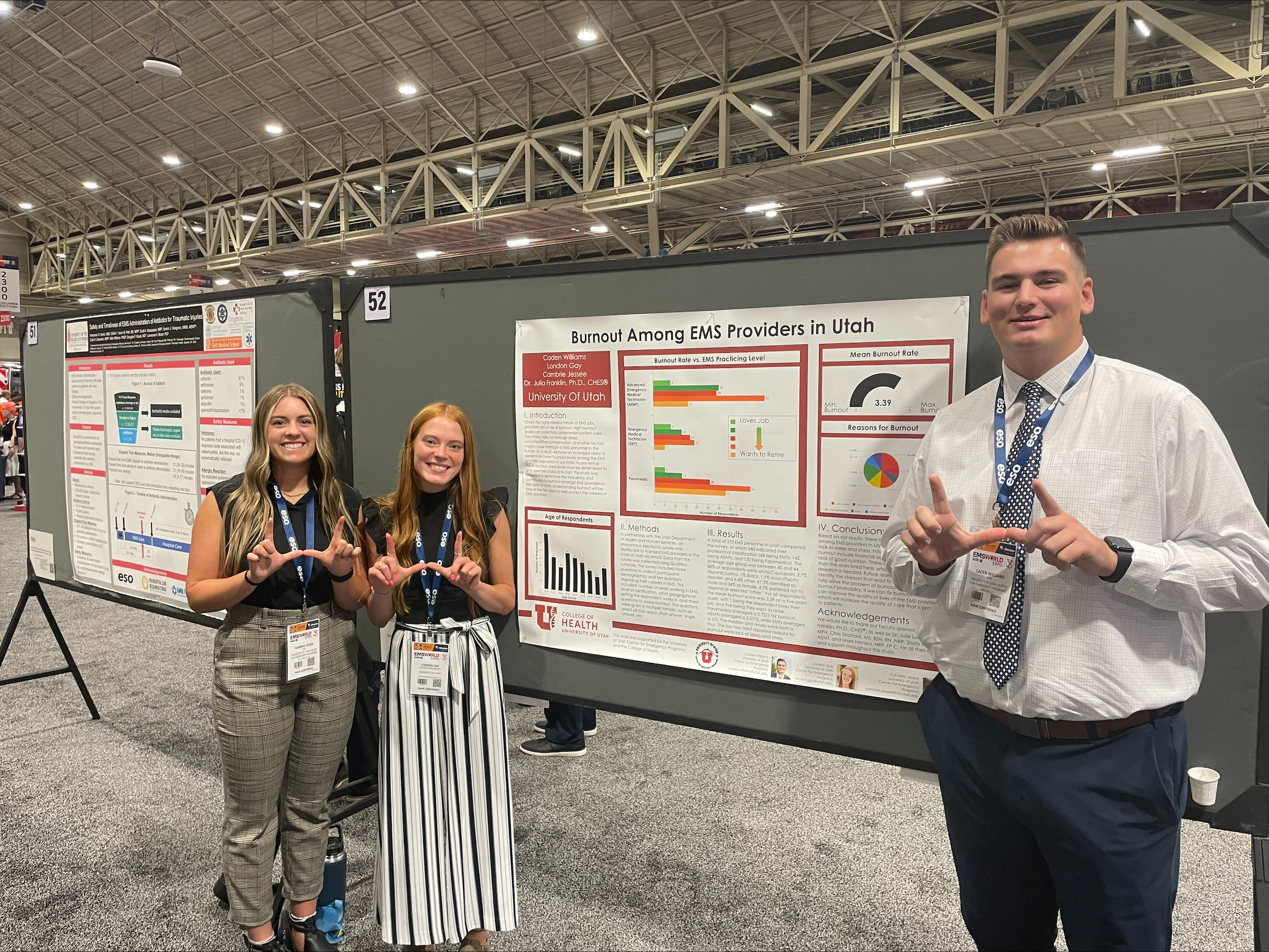
There’s a 9-5 office job, then there’s a job where you’re riding in the back of a hot ambulance running on four hours of sleep and trying desperately to save a life.
It’s just another day in the life of an EMS worker. But until recently, researchers in Utah hadn’t studied burnout levels in a high-stress, high-stakes profession. Department of Health and Kinesiology students Caden Williams, Cambrie Jessee and London Gay decided to change that.
Their paper, “Burnout Among EMS Providers,” surveyed 370 EMS personnel in Utah and found that more than 67% of workers had thought about quitting in the last year. On a scale of 1-5, with a 5 being that a worker was ready to retire, the average burnout rate ranked at a 3.39.
“We have a lot of friends who are in the EMS field and a big topic they hit in our classes is how do you handle stress, anxiety and not getting enough sleep,” Williams said. “We started this as a mock research project in our Fundamentals of EMS class and we realized this really hadn’t been studied in Utah.”

Unsurprisingly, two most reported reasons for burnout in the survey were lack of sleep and stress. In the free response section of the survey, respondents listed management issues as an additional top contributor to burnout.
The data lines up with Shelly Beck’s experience. An assistant professor in the Department of Health and Kinesiology, she teaches the class that prompted the mock research project on EMT burnout. She’s also worked as an advanced EMT for more than 20 years in many different community settings, including event response.
“Burnout is very prevalent in EMS,” she says. “We have very high levels of stress and a lot of different impacts that add to that stress and make it harder to deal with it. The majority of providers at some point in their career have burnout, and they’re either able to work through it or they leave the profession.”
Further proving the value of the project, the students had their final paper accepted at a competitive national conference, the EMS World Expo. They traveled to New Orleans in September to present and make connections that can help take their data to the next level.
“We had a lot of interest in this project at the conference,” Gay said. “We ended up talking with another researcher doing a similar study in Delaware, so we discussed taking this to a national level and seeing if our stats are generalizable beyond Utah.”
The three students partnered with the Utah Department of Health and Human Services to send an anonymous survey to licensed EMS providers in Utah. They received identified responses from 68 EMTs, 142 AEMTs and 130 paramedics, with the average age between 40 and 44.
Moving forward, the students hope to create another survey to see if they can find some solutions for agencies to help combat burnout in the field. That might include better pay or insurance, but it could also include education on better sleep and nutrition.
“It’s definitely a problem, especially since so many have thought about quitting EMS in the last year,” Williams said. “Hopefully our work can help the state prevent paramedic loss and help protect the careers of EMS providers.”